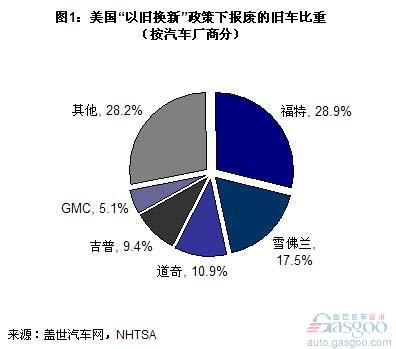Comparison of the main beneficiaries of China-US "exchange for old" policies
The China National Car Subsidy Policy, implemented from June 2009, will end at the end of May this year. The major beneficiaries of this policy and the halving of the purchase tax policy are Chinese self-owned brand companies. According to the data released by the China Association of Automobile Manufacturers, the market share of China's self-owned brand passenger cars has increased to 44.3% for the whole year of 2009. From the accumulated sales in the January-April period this year, the sales volume of self-owned brand passenger cars in China was 2.2381 million. It accounted for 48% of the total sales, and the share further increased by 4%.
The United States’ “renewal of old†policy is quite different from that of China. This difference is reflected in the policy implementation background, implementation deadlines, definitions of retired old cars and replaceable new cars, and scrapping and subsidy standards.
The main beneficiaries of this policy in the United States are not primarily local auto companies, but companies with more energy-efficient and environmentally-friendly vehicles – Japanese and Korean cars and Ford.


From Figure 1 and Figure 2, it can be seen that more than 70% of the old cars scrapped under this policy are the cars with low fuel economy of the three largest car companies in the United States. For this new vehicle, 39.4% of the new cars were Toyota, Honda, and Nissan, the three largest car makers in the Japanese market. Among the top three car companies in the U.S., this policy brought Ford’s new car sales to the largest, with new cars being replaced. 13.3% are Ford cars.
Cnc Machine Center,Winding Machine,Forging Machine,Punching Machine
WEISS MACHINERY CO., LTD. , https://www.weissmachinerys.com